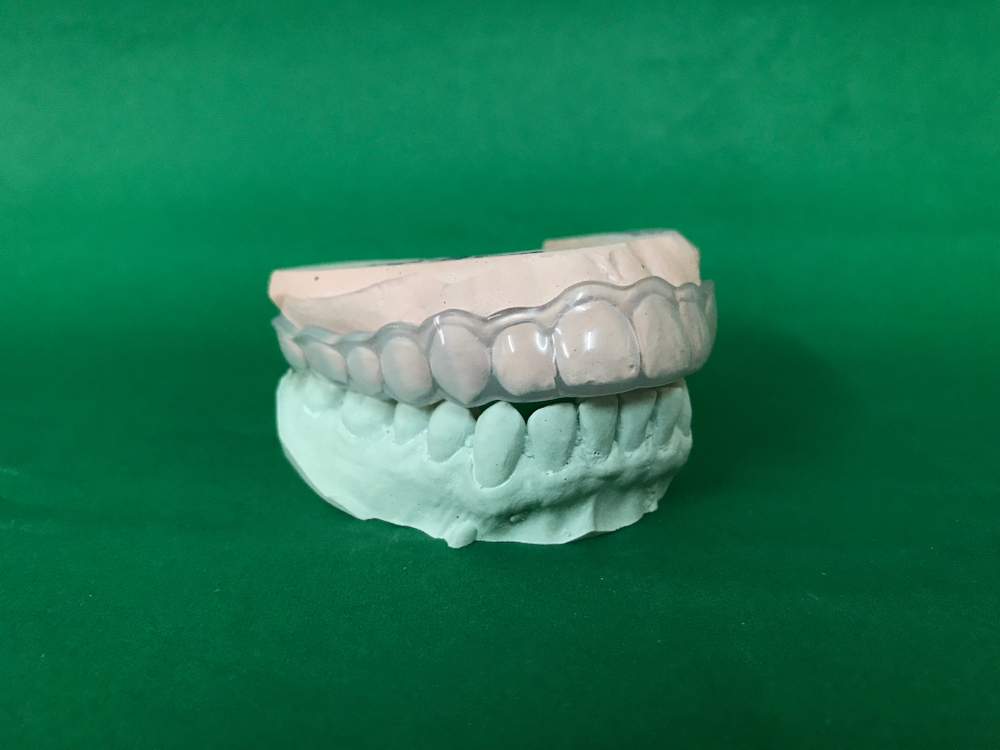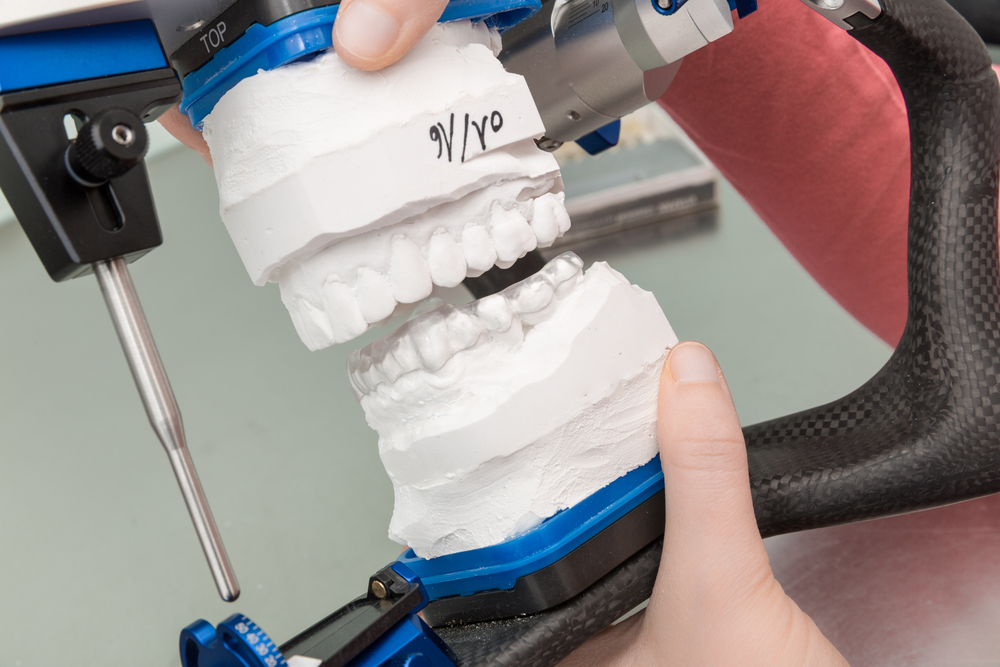Many jaw alignment disorders involve treatment with occlusal splints, a product customized to fit a patient’s mouth and bite pattern. These customized orthodontic devices guide the jaw into proper alignment to relax jaw muscles while a patient sleeps. To make an occlusal splint is an iterative and labor-intensive process that requires several cycles of producing the splint, doing a fit check, and then adjusting the model until it guides the patient’s jaw to the desired bite. Some disorders treated with occlusal splints are bruxism, temporomandibular joint (TMJ) disorder, and sleep apnea.
Modern 3D printing systems can now rapidly produce customized dental appliances like occlusal splints, clear aligners, surgical guides, retainers, and dental models quickly and with very little post-processing – enabling same-day turnaround for dental devices. 3D printing occlusal splints provide many benefits over traditional processes and allow practitioners to expedite treatment.

Why Use 3D Printing for Occlusal Splints?
Occlusal splints are produced using a thermoforming process. The splint may need adjustments to guide the patient’s jaw to the desired location. Thermoformed occlusal splints require significant manual labor to produce and adjust. While this process gives the practitioner control over the product for fit and comfort, it is time-consuming and requires specialized skills, making it costly for patients.
Digital dentistry and 3D printing change the experience for patients and practitioners as a dental appliance can be printed directly, and if needed, for each stage of the treatment process.
- The upper and lower teeth are scanned with an intraoral scanner.
- A digital bite model is created and can be 3D printed to check fit.
- An initial splint is designed based on the digital bite model and 3D printed directly onsite or at a lab. The initial 3D-printed splint may be studied during sleep and the digital design modified to include features limiting or allowing a range of motion.
- The design of the dental splint is finalized and 3D printed directly onsite or at a lab with minimal post-processing.
There are several benefits for patients and practitioners when 3D printing splints for the initial study as well as to test splint adjustments.

1. Accuracy and Production Speed
3D printing solutions can produce features with very high accuracy. Resolution can be as high as 25 microns with a DLP 3D printing process. Practitioners can produce 3D-printed splints directly from a digital model without additional grinding and polishing. With high accuracy, 3D printing can reduce the number of splint adjustment cycles. The practitioner typically only needs to wash and cure the splint, requiring no other post-processing steps to ensure a comfortable fit in the patient’s mouth. Overall, the time to produce 3D printed occlusal splints is much shorter than the manual method.
2. Material Benefits
Advanced 3D printing solutions provide a suite of materials, including a line of FDA-qualified dental resins. A dental-qualified resin will have similar mechanical properties to thermoformed materials. The benefit of using 3D printing for practitioners is the ability to produce a range of dental appliances with a single machine. As long as a digital model of the appliance is available, it can be 3D-printed using dental qualified materials in a short time frame – same day – and delivered directly to the patient.
3. Lower Cost and Labor
Producing occlusal splints with 3D printing may be a lower cost than traditional manual processes. Although 3D-printable dental resins can be more expensive per unit, the lower overall cost comes from reducing material waste and skilled labor. Staff or technicians require less specialized skills to operate 3D printers.
4. Easy to Replace
When a customized dental appliance like an occlusal splint is lost or broken, it can be costly and time-consuming to replace if it is made manually. With 3D printing, a digital model of the splint for a patient can be immediately sent to the 3D printer for rapid, on-demand production. The best 3D printers can produce a replacement splint in under an hour with very little post-processing, providing same-day service for patients. The benefits of 3D printing also apply to 3D-printed retainers, clear aligners, dentures, and other customized dental appliances.
Advanced 3D Printing Systems Help Expedite Occlusal Splint Production
3D printing is simplifying manufacturing across many industries, including dental and medical, with its flexibility, speed, and digital end-to-end process. Practitioners that want to provide more positive experiences for patients should consider 3D printing as a primary method to produce dental appliances. When practitioners and labs use modern 3D printing technologies and advanced resins, occlusal splints and other dental appliances can be produced with higher quality, lower cost, and less time.
Production of 3D printing occlusal splints is simplified with the iLux Dental and iLux Pro Dental solutions for offices and Lux 3+ Dental for labs by LuxCreo. Dental practitioners can use an integrated hardware and software dental bundle to rapidly produce multiple dental appliances onsite for same-day delivery to patients. For higher volume sites, such as dental labs, the iLux Pro Dental Solution, a fully integrated suite of hardware, software, and advanced FDA-approved materials, can 3D print multiple products in a single batch. LuxCreo can help you transform your dental business and deliver the best outcomes for your patients.
To learn more about our process and systems for 3D printing dental applications, visit our contact page or call (650) 336-0888.
